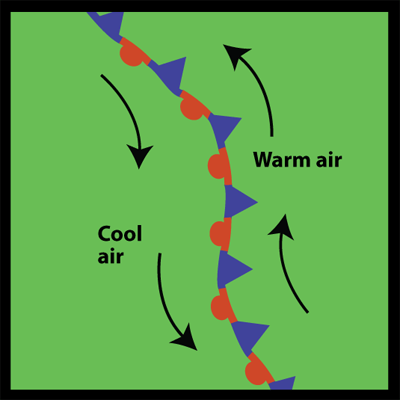Weather map showing a stationary front
Windows to the Universe image by Lisa Gardiner
Stationary Fronts
A stationary front forms when a cold front or warm front stops moving. This happens when two masses of air are pushing against each other but neither is powerful enough to move the other.
A stationary front may stay put for days. The front may start moving again, becoming either a cold or warm front. Or it may break apart.
Air temperature and wind can be different on opposite sides of a stationary front. The weather is often cloudy along a stationary front and rain or snow often falls, especially if the front is in an area of low atmospheric pressure.
On a weather map, a stationary front is shown as alternating red half circles and blue triangles like in the map at the left.
Last modified August 12, 2009 by Lisa Gardiner.
You might also be interested in:

What types of instructional experiences help K-8 students learn science with understanding? What do science educators teachers, teacher leaders, science specialists, professional development staff, curriculum designers, school administrators need to know to create and support such experiences?
...more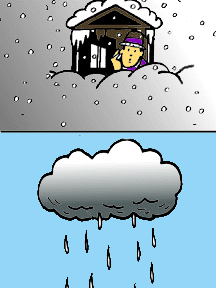
Precipitation (pre-sip-uh-tay-shun) is any form of water that falls to the Earth's surface. Different forms of precipitation include drizzle, rain, hail, snow, sleet, and freezing rain. Precipitation
...more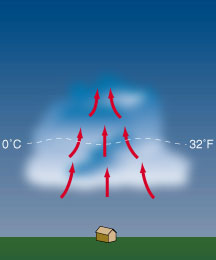
The sun heats the earth during the day. The heat on the surface warms the air around it. Since warm air is lighter than cool air, it starts to rise. If the air has water in it, then the warm air turns
...more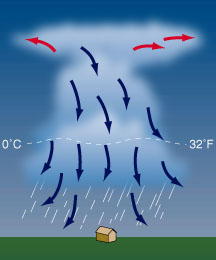
After about 30 minutes, the thunderstorm begins to disappear. The cool downward wind stops the warm air from rising. No more rain is in the cloud. The cloud disappears. The whole process takes about one
...more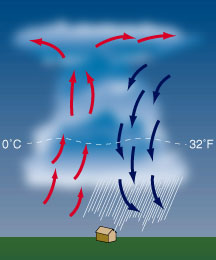
When the cumulus cloud becomes big, the water in it becomes heavy. It starts to fall out of the cloud. At the same time, cool dry air starts to enter the cloud. Cool air is heavier than warm air. The
...more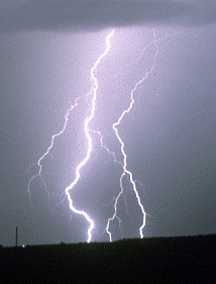
You see a flash of lightning across the night sky. Five seconds later, your hear the rumble of thunder. If lightning and thunder come from the same source, then why don't they occur at the same time?
...more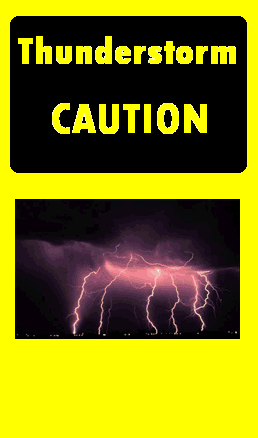
Thunderstorms can be really dangerous! Flash floods, lightning bolts, hail, tornadoes...all of these things can hurt you if you're not careful. So here's some safety tips. GO INSIDE! If you hear distant
...more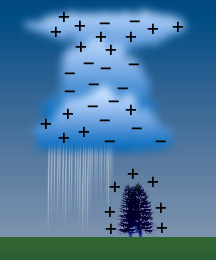
The sky is filled with electric charge. In a calm sky, the positive (+) and negative (-) charges are mixed up. Inside a thunderstorm, the + and - charges are separated into two sections. All of the +
...more
